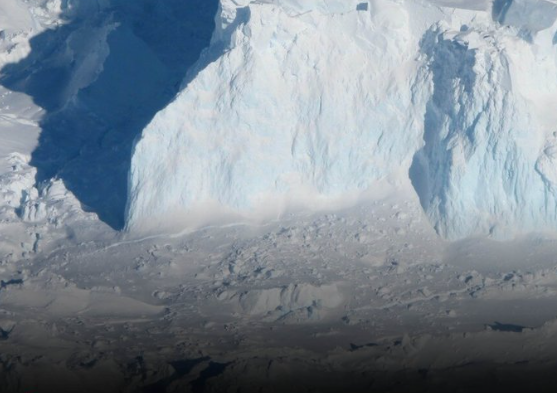A recent study challenges the severe predictions about Antarctica’s melting glaciers, suggesting that the feared consequences might not be as dire as previously thought. This reassessment contrasts sharply with the United Nations’ Intergovernmental Panel on Climate Change (IPCC) 2016 assertion. The IPCC had warned that the meltdown of the Antarctic glaciers, notably the “Doomsday” Thwaites Glacier, could potentially elevate global sea levels by two feet by 2100 and by up to 50 feet by 2300 under a worst-case scenario.
Full Story: https://t.co/B42mCcHBjR
In a daring move to better understand the alarming impacts of global warming on Antarctica’s ice sheets, a team of 32 scientists has embarked on a crucial mission to study the Thwaites glacier, widely known as the “Doomsday Glacier.“… pic.twitter.com/ltxC0cbQWz
— uInterview (@uinterview) August 21, 2024
However, fresh insights from three advanced climate models, supported by the National Science Foundation, indicate that the UN’s scenario is excessively pessimistic and improbable. These new models offer more grounded predictions, suggesting that the catastrophic disintegration of these glaciers in a domino effect is unlikely.
The focal point of this new research is the Thwaites Glacier, sometimes referred to as the “Doomsday Glacier” due to its massive potential impact on sea levels if it were to collapse. Spanning 75 miles, Thwaites is closely monitored due to its pivotal role in oceanic levels. The study aimed to determine if significant portions of Thwaites’ ice shelf could trigger a rapid discharge of Antarctica’s inland ice into the ocean, thus accelerating sea level rise.
Mathieu Morlighem, a co-author of the study and a professor of earth sciences, emphasized the critical nature of accurate high-end projections for coastal planning. He acknowledged that while the projections still predict a swift retreat of the ice sheet, they refine the understanding of the glacier’s behavior under extreme conditions.
These projections not only influence scientific discourse but also have tangible impacts on community planning. For instance, overly dire predictions could lead to unnecessary expenditures on overly robust coastal defenses, like the scenario suggested for Miami.
Moreover, the study draws on a high-emission future scenario, labeled RCP8.5 by the IPCC, which imagines a world where fossil fuel consumption and greenhouse gas emissions surge without any policy interventions. This scenario predicts a severe increase in global temperatures, leading to dramatic sea-level rises.
However, the new research, utilizing the Ice-sheet and Sea-level System Model (ISSM) developed by Dartmouth, NASA’s Jet Propulsion Laboratory, and the University of California at Irvine, suggests that an immediate and significant increase in ice flow speed following the collapse of the ice shelf is unlikely to provoke a quick inland retreat of the glacier. The model, which processed 75,000 individual elements at a resolution of approximately one mile, alongside two other detailed simulations, concluded that the ice shelf’s loss does not necessarily trigger a cascading glacier retreat.
Researchers have estimated the Antarctic “Doomsday” glacier isn’t melting as quickly as scientists previously thought, though it’s still rapidly collapsing.#Forbes
For more details: 🔗 https://t.co/TTNpJAbcOC pic.twitter.com/g9Hk4XpeFl
— Forbes Middle East (@Forbes_MENA_) August 21, 2024
Despite these findings offering a less catastrophic outlook, the situation remains critical. Glaciologist Dr. Dan Goldberg, who contributed to the study, remarked that the Thwaites Glacier is expected to continue its retreat in unpredictable ways over the next centuries, highlighting the ongoing need for robust modeling and observation to better understand its response to environmental changes.
In summary, while the study critiques one specific aspect of the IPCC’s predictions—the behavior of the glacier’s ice shelf—it does not dispute the broader, well-established projections of climate impact. This underscores the complexity of predicting glacier behavior and the vital role of continuous scientific inquiry in informing policy and preparedness for future climatic shifts.
Major Points:
- The latest study challenges the United Nations’ severe predictions about Antarctic glacier melt, suggesting that the catastrophic outcomes may be less likely than previously estimated.
- New climate models funded by the National Science Foundation show that the “Doomsday” scenario for the Thwaites Glacier, which predicted massive sea level rises by 2100 and 2300, is considered extreme and improbable.
- Research focused on whether the collapse of Thwaites Glacier’s ice shelf would trigger rapid sea level rise by causing inland ice to slide into the ocean, but found that such scenarios are not supported by the new data.
- The study employed advanced simulation models that processed thousands of individual elements to predict ice flow and retreat, concluding that the ice shelf’s collapse would not automatically lead to rapid glacier retreat.
- While the study offers a less grim outlook for the immediate future, it still acknowledges the ongoing threat of glacier retreat due to climate change and emphasizes the need for continued research and accurate modeling to guide global coastal planning.
Ben Hanover – Reprinted with permission of Whatfinger News


